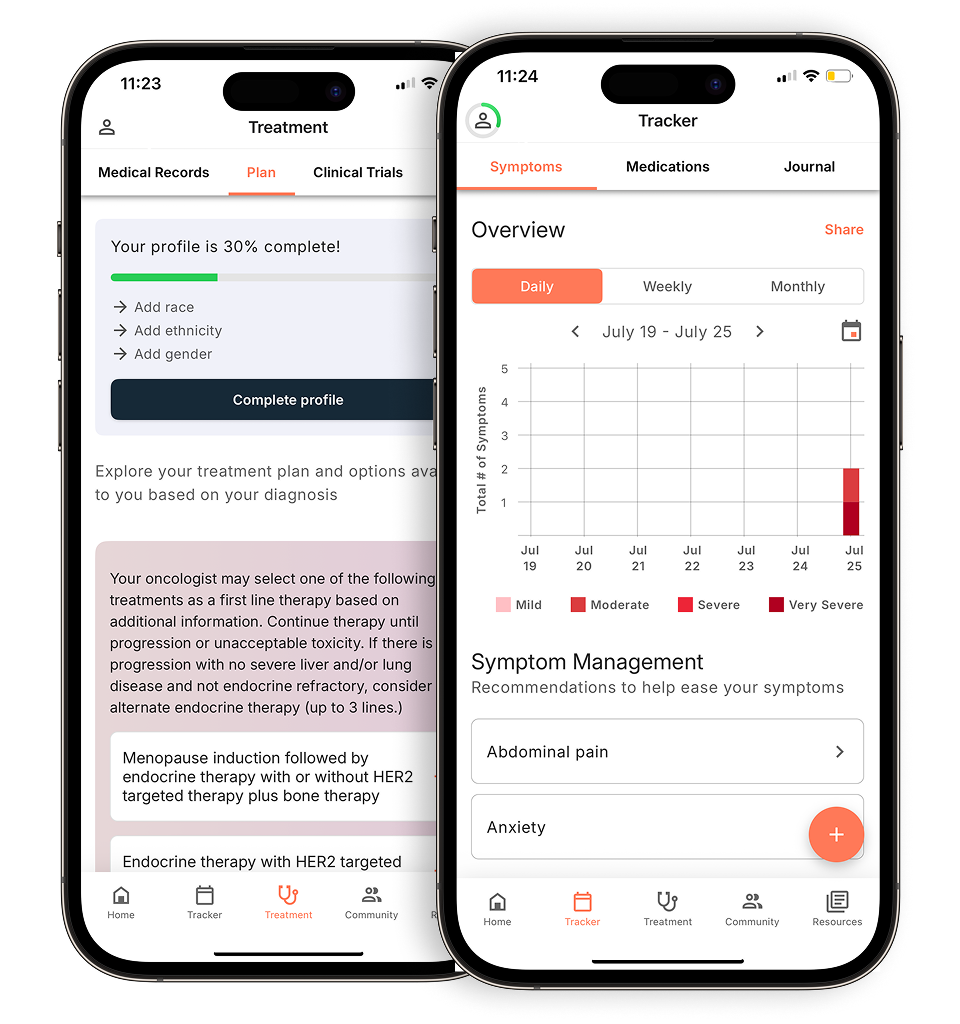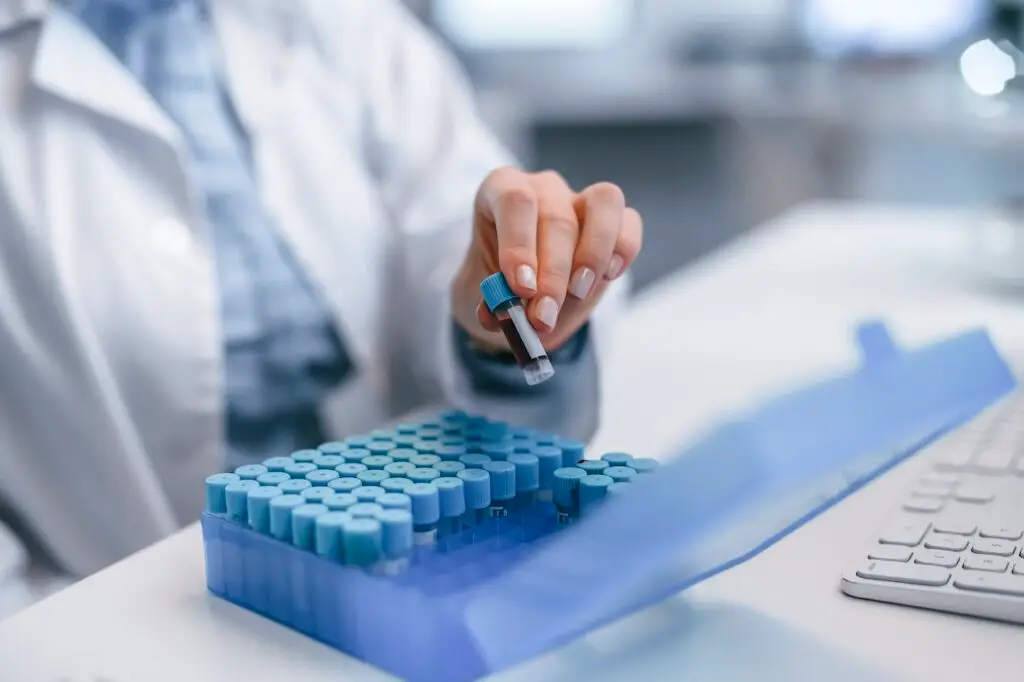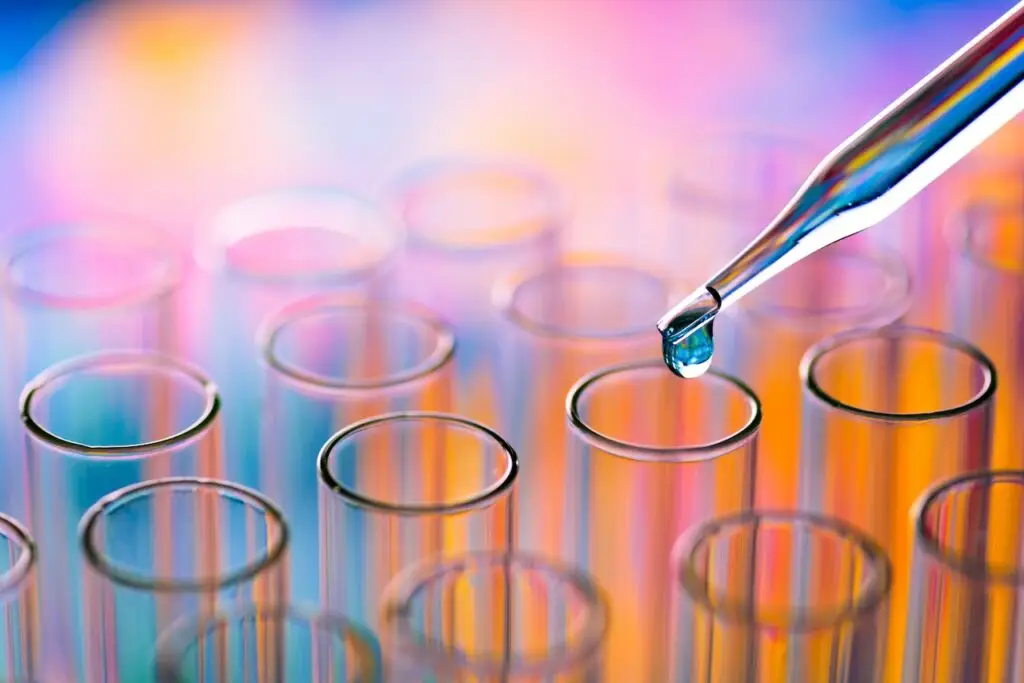We were fortunate to host Dr. Martin F. Dietrich, a medical oncologist at the Cancer Care Centers of Brevard and an assistant professor of internal medicine at the University of Central Florida, for a recent Outcomes4Me “Ask the Expert” webinar.
You can watch Dr. Dietrich’s full webinar below.
We’ve transcribed some of the key discussion points from the webinar. If you or a loved one have been recently diagnosed with non-small cell lung cancer (NSCLC), we hope you’ll find Dr. Dietrich’s perspective very helpful.
The following questions and responses have been lightly edited for grammatical purposes.
Q: How do doctors determine the type and stage of lung cancer that a patient has?
A: So that’s a very important part [of the cancer experience]. And I think there are two separate questions.One is: what type of lung cancer it is? And that requires a biopsy to see what the cancer looks like under the microscope (or histology). That’s a broad spectrum where we have non-small cell and small-cell lung cancer, and then different subsets of non-small cell lung cancer. And then a second layer. And that’s what we’re going to be talking about a lot today: [about] molecular features, of genetic changes that we’re trying to understand. In addition to some markers that help us identify patients that would benefit particularly from immunotherapies.
Evidence-based guidance powered by NCCN Guidelines®
Personalized treatment plans shaped by the latest oncology standards—tailored to your diagnosis.
Get started
View your personalized treatment plan in the Outcomes4Me app
Use your diagnosis to unlock personalized NCCN Guidelines®-aligned recommendations.
Continue in app
So that’s the “what” part [of determining the cancer] and [then we need to understand] how far has it gone? There are two ways of looking at this. We first start with scans of the entire body. I think that’s pretty much standard for all lung cancer diagnoses with a PET scan in the beginning to look at the entire body, looking at anatomic changes of the disease, suspicion, and then also looking at metabolic activity. Cancer consumes a lot of energy. And so with a PET scan, we’re able to see these hot spots of energy consumption and correlate them with changes that we’re concerned about for cancer spread.
And then the brain is a little bit challenging. And you can imagine the brain has a lot of background activity. And so if we would use a PET scan for the brain, we would see activity in the background, and we would be able, unfortunately, to miss things. So we need to complement the PET scan with an MRI of the brain to get the full body staging. And that gives us the extent of disease spread, and typically a stage of the diagnosis which goes from Stage I, which is a localized tumor to Stage IV, which is a tumor that has spread to other parts of the body, and the sort of gray shades in between for local size and lymph node involvement that would constitute Stage II, and Stage III.
Q: Should all non-small cell lung cancer patients undergo comprehensive biomarker testing? And if not, why not?
A: So the answer is absolutely yes, and if it hasn’t been done that’s a major missing piece of information. And we learned most of what we know about lung cancer genetics in Stage IV but what we realize now is that biology is not stage-dependent. So what we’ve learned in Stage IV translates very well to Stage III and Stage II and Stage I, every time we need systemic therapy. And these genetic markers guide us to the optimal treatment. So yes, absolutely, this needs to be done as top priority in selecting treatments for a Stage II patient as well as it is for Stage IV. Patients so unanimously deserve genetic testing on a comprehensive basis, really looking for the entire array of abnormalities that can be seen on the genetic level.
Q: How soon can biomarker testing be performed after the diagnosis?
A: Well, this is a little bit of a paradigm shift. In my practice, I can look at CT scans, and oftentimes really have a pretty good idea of whether or not we’re looking at lung cancer or not, just based on the CT scan. Even if the biopsy hasn’t been done before, so I oftentimes initiate what we call a liquid biopsy, which is the collection of tumor DNA extracted from the blood or from the plasma of the blood, and try to get this started as soon as possible. The sooner we have the information, the sooner we can get a patient to treatment, the sooner we can tackle the cancer. I would do [biomarker testing] as fast as possible when the biopsy is obtained, also on tissue, but obviously getting a biopsy does typically require another set of scheduled steps that we need to take into account. And then ordering molecular testing on it, can take up to 2 to 3 weeks to actually get all of those information pieces together, those delays, and we can shorten by integrating liquid biopsy at the same time. So, and the earlier the better..The diagnosis is simply not complete without genetics.
Q: You mentioned tissue biopsies and liquid biopsies. Could you talk a little bit about the differences, and the pros and cons of each?
A: The liquid biopsy is a simple blood draw. Essentially, we’re looking at tumor DNA that has been shed into the bloodstream and we’re able to capture this tumor DNA and process it from the bloodstream as well. Obviously the benefits of a liquid biopsy are that it’s readily available, it’s very easy to do, and it’s really not any different than any other blood draw. So it’s a very quick situation for us. And, typically, the turnaround time is around 7 days for us–so very, very efficient technology. And the tissue biopsy obviously gives us a little bit more information. We have more DNA material. You can imagine how diluted the DNA circulating in the bloodstream is. There’s a lot of background, DNA, and that comes from the healthy cells of the body, and when you biopsy a tumor, you have a much more concentrated form of DNA. You have more DNA as well, so you can run a broader profile. You can look at different layers of genetic material, not only DNA but RNA…it allows us to maximize the sensitivity of the test and also allows us to do some additional functional stains like PDLI, which is a major marker for immunotherapy efficiency. So it’s not liquid against tissue. They belong together, and I’m very certain that in 2 to 3 years from now, this is the only way that we’re going to do it, and then always will wonder, “Why haven’t we done this sooner?” They complement each other very, very well in both practical and scientific manners.
To view the entirety of Dr. Dietrich’s Ask the Expert webinar, you can access it here.
Personalized support for real care decisions
Understand your diagnosis, explore clinical trials, and track symptoms--all in one place.
Get started
Compare treatments, prepare for appointments, and track side effects—all in the app
Built for your diagnosis, Outcomes4Me gives you the tools to make confident, informed decisions—right when you need them.
Continue in app







